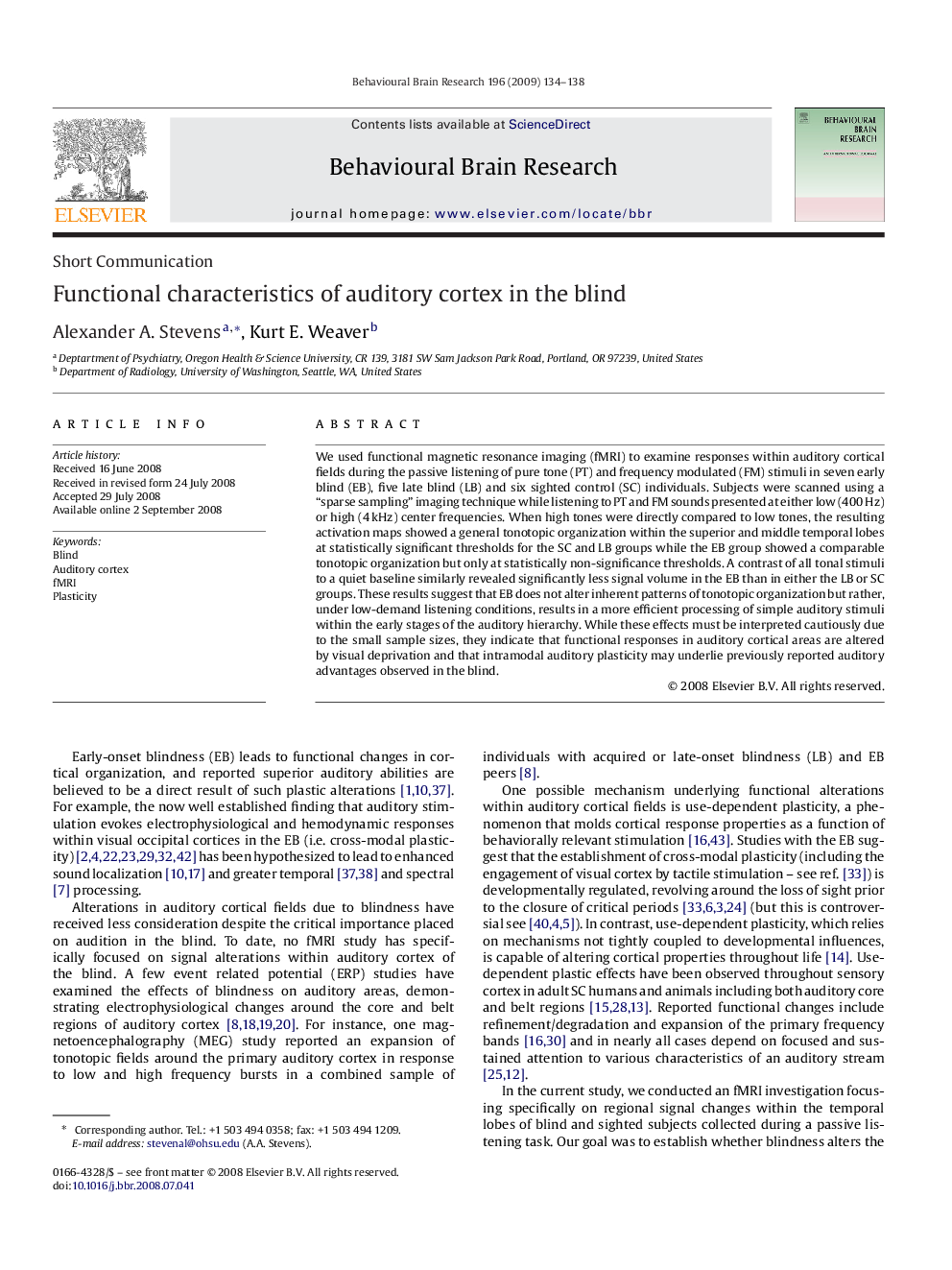| Article ID | Journal | Published Year | Pages | File Type |
|---|---|---|---|---|
| 6260200 | Behavioural Brain Research | 2009 | 5 Pages |
We used functional magnetic resonance imaging (fMRI) to examine responses within auditory cortical fields during the passive listening of pure tone (PT) and frequency modulated (FM) stimuli in seven early blind (EB), five late blind (LB) and six sighted control (SC) individuals. Subjects were scanned using a “sparse sampling” imaging technique while listening to PT and FM sounds presented at either low (400Â Hz) or high (4Â kHz) center frequencies. When high tones were directly compared to low tones, the resulting activation maps showed a general tonotopic organization within the superior and middle temporal lobes at statistically significant thresholds for the SC and LB groups while the EB group showed a comparable tonotopic organization but only at statistically non-significance thresholds. A contrast of all tonal stimuli to a quiet baseline similarly revealed significantly less signal volume in the EB than in either the LB or SC groups. These results suggest that EB does not alter inherent patterns of tonotopic organization but rather, under low-demand listening conditions, results in a more efficient processing of simple auditory stimuli within the early stages of the auditory hierarchy. While these effects must be interpreted cautiously due to the small sample sizes, they indicate that functional responses in auditory cortical areas are altered by visual deprivation and that intramodal auditory plasticity may underlie previously reported auditory advantages observed in the blind.
